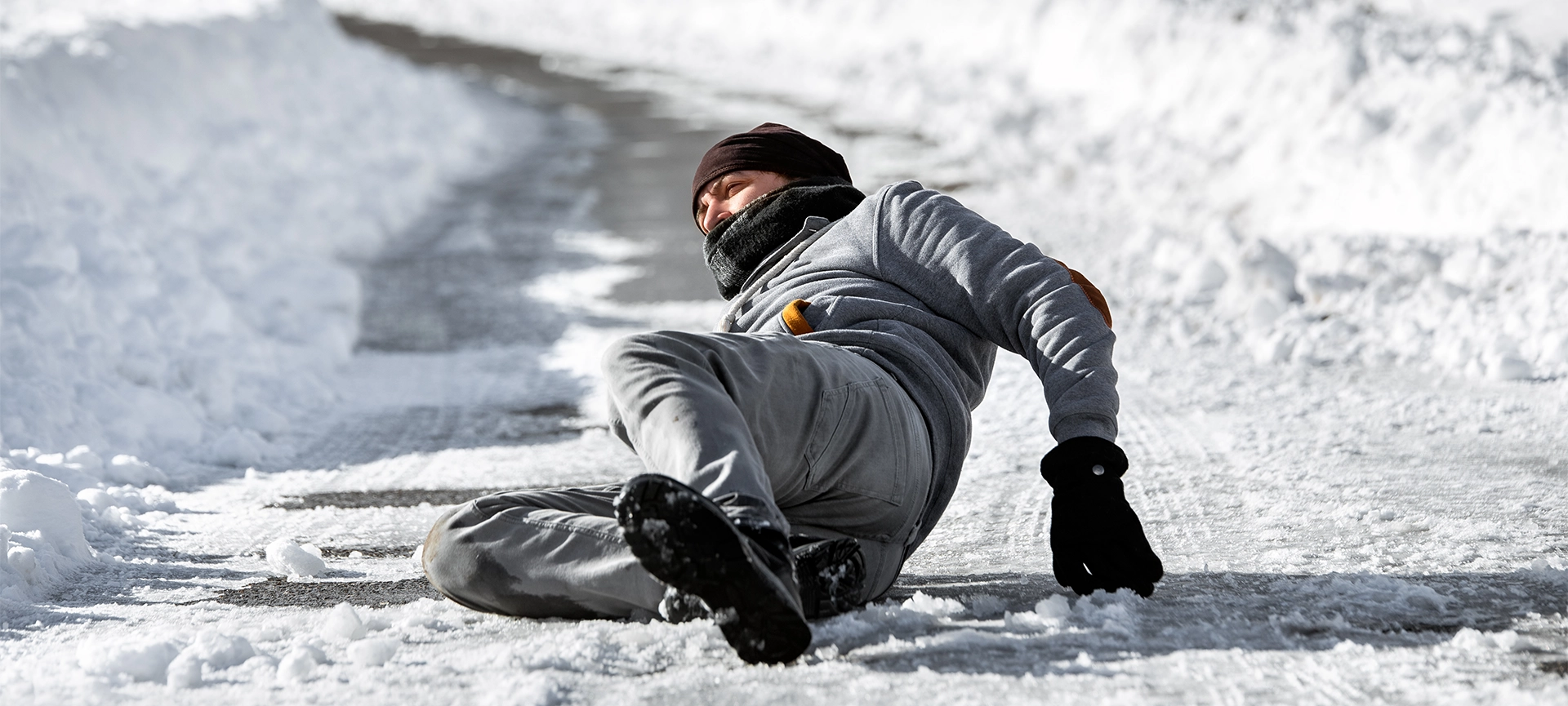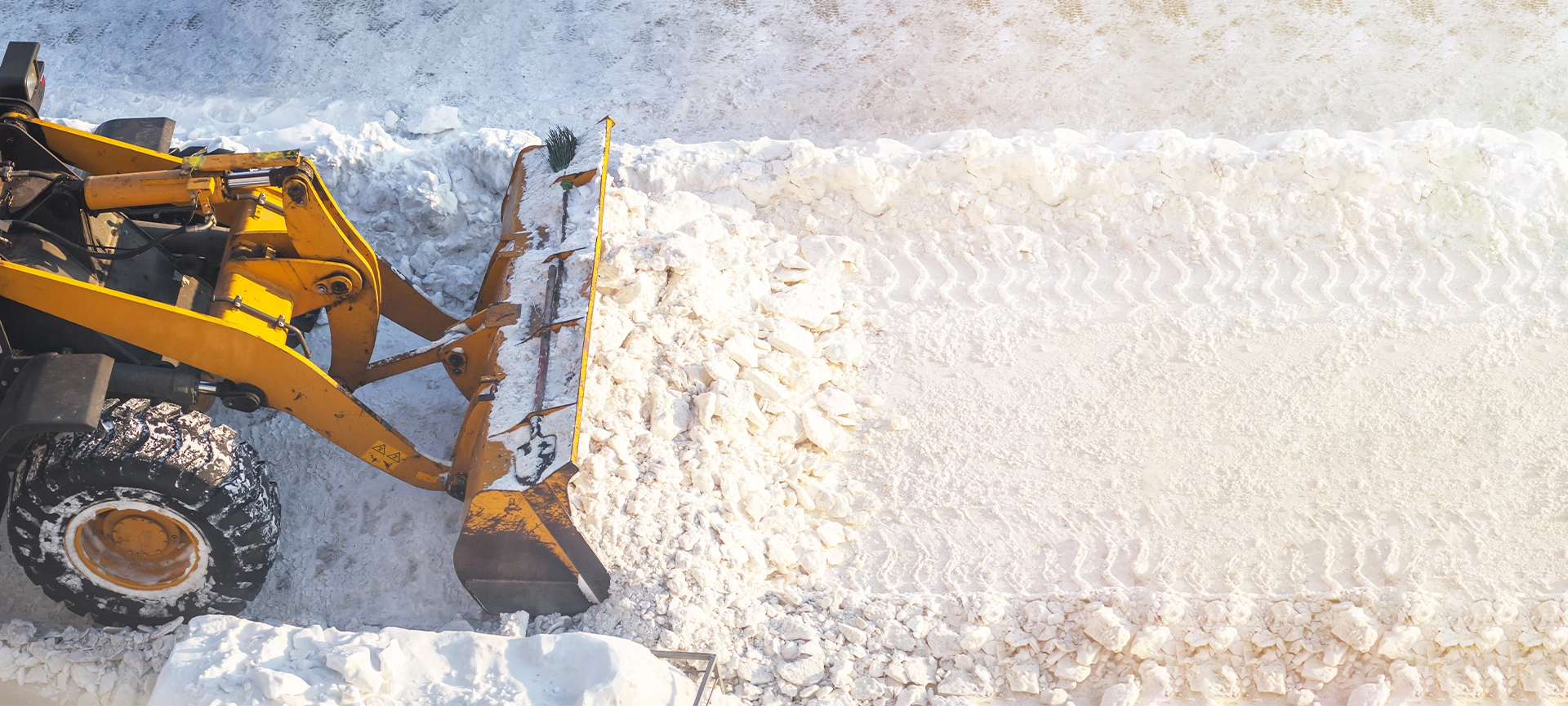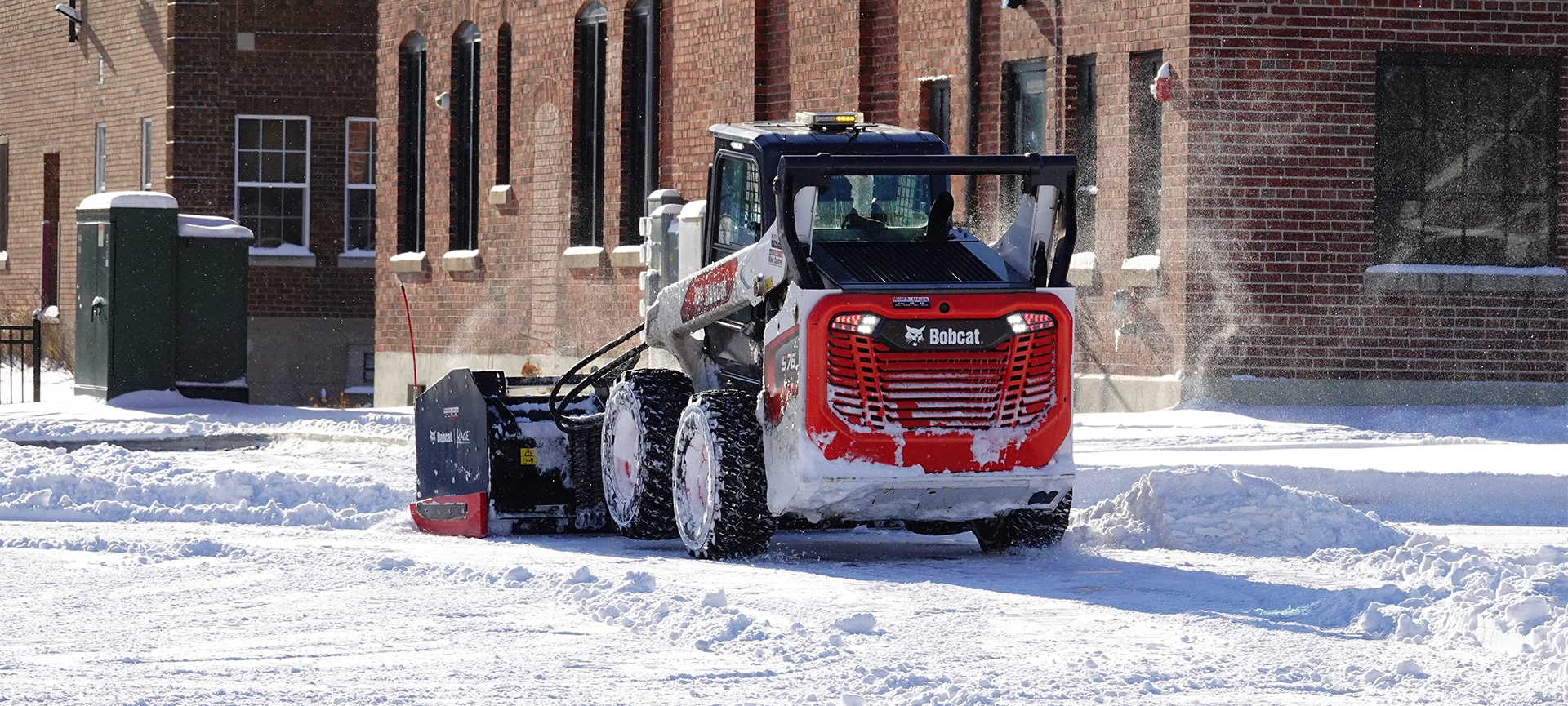
Winter weather can change fast. Snow bands split, temperatures dip below freezing, and a clear path at midnight can turn icy by 2 a.m.
For commercial property managers, this raises a pressing question: do you really need 24/7 snow monitoring, or can scheduled ploughing and reactive salting cover your needs? The answer depends on your site’s activity, design, and risk history.
This guide explains what round-the-clock monitoring involves, who benefits most, how it compares to scheduled service, and what to include in your service agreement.
What 24/7 Snow Monitoring Means
This service is more than a quick drive-by after dark. It combines live weather data, routine checks, and detailed records to help you act sooner and defend your actions if a claim arises.
A proper program monitors pavement and air temperatures, precipitation type, and refreeze risk. It uses set triggers for treatments, such as surface temperatures dropping to the refreeze point. High-risk areas like ramps, stairs, shaded walkways, and loading docks are clearly identified. Monitoring also ensures one reporting channel for hazards, so work orders aren’t duplicated.
Typical inclusions are:
- Live temperature and precipitation tracking
- Triggers for pre-treating, ploughing, and post-treating
- Overnight patrols or remote camera checks
- Time-stamped logs and photos stored in a shared dashboard
- An escalation plan for priority zones
The value is twofold: you reduce hazards sooner, and you keep a defensible record of your work.
Related Article: Is De-Icing Enough? When You Need Full-Service Ice Management
Properties That Benefit Most
Not every site justifies full-time oversight, but some clearly do. The strongest cases are properties with continuous or late-night activity, complex layouts, and a track record of winter incidents.
You’re a good candidate if your property has:
- Operations that run beyond standard business hours
- High foot traffic or frequent vehicle movements after dark
- Slopes, underground parking, or loading docks
- Areas prone to drifting snow or overnight refreeze
- Corporate or lease obligations for strict winter documentation
Examples include hospitals, retail plazas with extended trading, logistics yards, and hotels. These properties face the highest risk of incidents outside daytime hours, making quick action essential.
When Scheduled Service Is Enough
Lower-risk properties may not need full 24/7 monitoring. If your building is open only during the day, has a simple layout, and sees minimal public traffic, you can often manage with a strong forecast-led plan.
A solid scheduled service should include:
- Pre-treatments before forecasted storms
- Snow clearing during events
- Post-treatments once clearing is complete
- Same-day follow-ups if temperatures drop again
The key is to keep accurate records and respond quickly to any changes. Well-maintained logs often resolve disputes before they escalate.
Related Article: Top 7 Mistakes Businesses Make with Snow and Ice Management
Cost Versus Risk
Many property managers hesitate at the added cost of continuous monitoring. A better way to think about it is in terms of exposure.
Slip-and-fall incidents can cost tens of thousands of dollars once reserves, deductibles, and staff time are counted. If 24/7 monitoring prevents even one major incident over a few winters, it can pay for itself.
For many sites, the added cost is about 10–25% above a standard winter contract. Compare this to the potential cost of a single claim plus the indirect costs of downtime, lost tenant trust, and insurance premium increases.
Four Monitoring Models
Not all monitoring needs to be “full coverage.” Options include:
Full 24/7 Oversight – Continuous weather watch, overnight patrols, sensors, and on-call crews. Best for high-traffic, high-risk properties. Highest cost, but strongest protection.
Night-Priority Monitoring – Focuses on evening and early morning when refreeze is most likely. More affordable than full coverage and suitable for offices, schools, and daytime retail.
Trigger-Based Monitoring – Uses sensors and hyperlocal forecasts to alert crews when conditions cross agreed thresholds. Efficient and scalable, but it depends on reliable tech.
Event-Only Monitoring – Active only during storms or freezing rain. Lowest cost, but may miss refreeze or drifting later in the day.
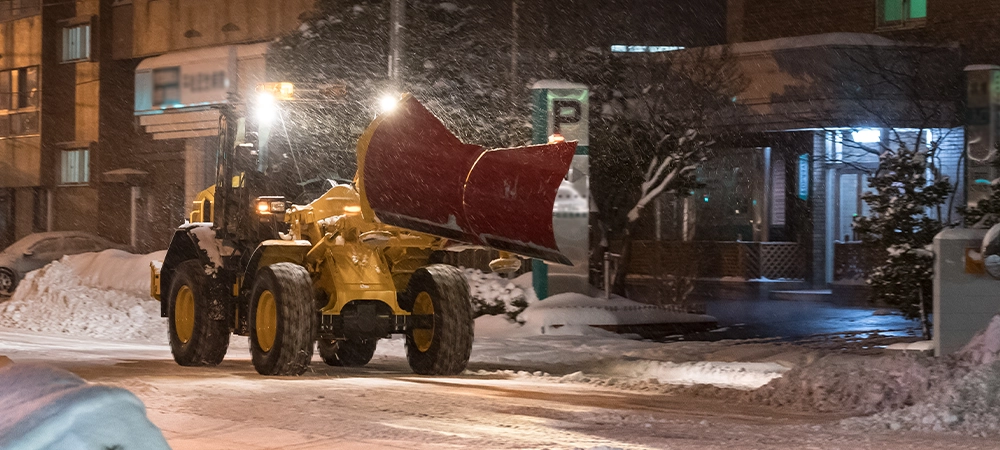
What to Include in Your SLA
Your service level agreement (SLA) should make expectations crystal clear — who acts, where, how, and how quickly.
- Clearly state the ETA for each zone in your service plan. List the de-icing materials to be used and explain how they will be stored in compliance with the Transportation of Dangerous Goods (TDG) Regulations.
- Require the contractor to provide a current Certificate of Insurance showing at least five million dollars in commercial general liability coverage.
- In Ontario, also request a valid Workplace Safety and Insurance Board (WSIB) clearance. Include details on the age and condition of equipment, availability of backup machines, and sidewalk-sized units to prevent downtime.
- Set out how reports will be delivered and the length of time they must be kept—three years is a reasonable minimum.
Rolling Out the Plan
Even the best plan fails if no one knows about it. Publish your winter policy before the season starts. Notify tenants by email, post lobby notices, and update your property app if you have one.
Keep hazard reporting simple. A single hotline or email for icy spots prevents confusion and duplicate work orders. Set clear parking rules for snow nights and mark any loading dock closures in advance. Inside entrances, use mats and drip trays to reduce slips just inside the door.
Meet with your contractor weekly during the season to review logs, discuss any issues, and adjust patrols as needed.
Related Article: How to Audit Your Property for Winter Safety Before the First Snowfall
Technology That Helps
Technology can make monitoring smarter. Pavement sensors detect whether surfaces are wet or dry and can send alerts before ice forms. Hyperlocal forecasts narrow the gap between regional radar and your property’s actual conditions.
A shared dashboard gives you live status updates and quick access to event reports. Integrating this with your maintenance software via an API keeps everything in one place.
For cameras, focus on ground surfaces to respect privacy. Store footage only as long as needed for insurance and legal purposes.
Choosing the Right Contractor
The quality of your snow contractor becomes obvious during the first storm. Ask for proof of insurance, WSIB clearance, and an up-to-date equipment list. Look for experience with similar properties, especially if you have ramps, stairs, or underground garages.
Confirm they have backup units and operators trained under TDG rules for handling de-icing materials.
Reliable contractors send weather briefings before storms and event summaries afterward without you having to ask.
In the Greater Toronto Area, companies like Green Side Up Contracting can provide this documentation up front, making board or insurer approval faster.
A Quick Decision Test
If you answer yes to four or more of these, 24/7 or night-priority monitoring is worth considering:
- Would an off-hours incident cause serious cost or downtime?
- Do you operate beyond standard business hours?
- Have you had a slip, claim, or near miss in the past two winters?
- Do you have ramps, stairs, docks, or underground parking?
- Does your site refreeze or drift often after storms?
- Do leases or corporate rules require strict documentation?
- Is the public or multiple tenants on site overnight?
- Would one claim cost more than several years of monitoring premiums?
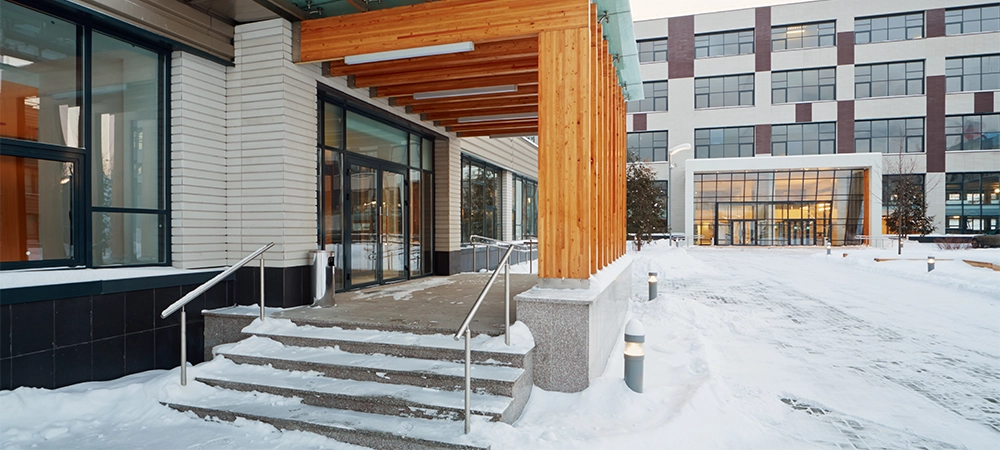
What Success Looks Like
Within six to eight weeks of implementing a good plan, you should see:
- Fewer emergency calls
- Logs that match patrols to risk windows
- Predictable service costs by activity type
- Tenants who know how to report hazards and see quick action
- Insurance or safety teams spending less time chasing reports
Making the Right Call Before the First Snowfall
A well-structured commercial snow and ice removal plan can reduce liability, keep operations running smoothly, and satisfy insurer documentation requirements.
Round-the-clock snow monitoring isn’t a one-size-fits-all service. For high-risk, always-busy properties, it can be a smart investment that prevents costly incidents and keeps you compliant. For lower-risk sites, a disciplined, scheduled program with strong documentation may be all you need.
If you manage commercial sites in the GTA or York Region, Green Side Up Contracting can assess your risk, design an SLA that protects you, and set up the right monitoring model for your needs.
Book your winter safety review with us today. Get a tailored plan, clear SLAs, and the documentation your insurer will expect before the snow falls.


